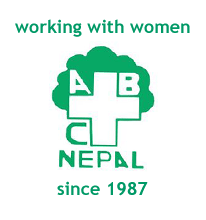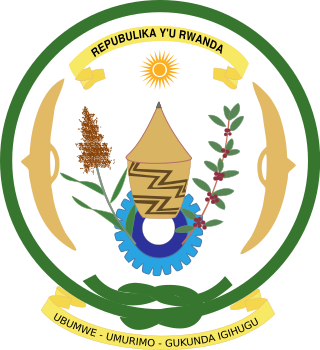Related Research Articles
A planned economy is a type of economic system where the distribution of goods and services or the investment, production and the allocation of capital goods takes place according to economic plans that are either economy-wide or limited to a category of goods and services. A planned economy may use centralized, decentralized, participatory or Soviet-type forms of economic planning. The level of centralization or decentralization in decision-making and participation depends on the specific type of planning mechanism employed.
Decentralization or decentralisation is the process by which the activities of an organization, particularly those regarding planning and decision-making, are distributed or delegated away from a central, authoritative location or group and given to smaller factions within it.

The Airports Authority of India, or AAI, is a statutory body under the ownership of the Ministry of Civil Aviation, Government of India. It is responsible for creating, upgrading, maintaining, and managing civil aviation infrastructure in India. It provides Communication Navigation Surveillance/Air Traffic Management (CNS/ATM) services over the Indian airspace and adjoining oceanic areas. AAI currently manages a total of 137 airports, including 34 international airports, 10 Customs Airports, 81 domestic airports, and 23 Civil enclaves at Defence airfields. AAI also has ground installations at all airports and 25 other locations to ensure the safety of aircraft operations. AAI covers all major air routes over the Indian landmass via 29 Radar installations at 11 locations along with 700 VOR/DVOR installations co-located with Distance Measuring Equipment (DME). 52 runways are provided with Instrument landing system (ILS) installations with Night Landing Facilities at most of these airports and an Automatic Message Switching System at 15 Airports.

HIV/AIDS in India is an epidemic. The National AIDS Control Organisation (NACO) estimated that 2.14 million people lived with HIV/AIDS in India in 2017. Despite being home to the world's third-largest population of persons with HIV/AIDS, the AIDS prevalence rate in India is lower than that of many other countries. In 2016, India's AIDS prevalence rate stood at approximately 0.30%—the 80th highest in the world. Treatment of HIV/AIDS is primarily via a "drug cocktail" of antiretroviral drugs and education programs to help people avoid infection.

The Ministry of Health and Family Welfare, also known by its abbreviation MoHFW,is an Indian government ministry charged with health policy in India. It is also responsible for all government programs relating to family planning in India.
The National Tuberculosis Elimination Program (NTEP) is the Public Health initiative of the Government of India that organizes its anti-Tuberculosis efforts. It functions as a flagship component of the National Health Mission (NHM) and provides technical and managerial leadership to anti-tuberculosis activities in the country. As per the National Strategic Plan 2017–25, the program has a vision of achieving a "TB free India",with a strategies under the broad themes of "Prevent, Detect,Treat and Build pillars for universal coverage and social protection". The program provides, various free of cost, quality tuberculosis diagnosis and treatment services across the country through the government health system.
Uganda's health system is composed of health services delivered to the public sector, by private providers, and by traditional and complementary health practitioners. It also includes community-based health care and health promotion activities.
Kenya's health care system is structured in a step-wise manner so that complicated cases are referred to a higher level. Gaps in the system are filled by private and church run units.

68 Pages is a 2007 Indian film about an HIV/AIDS counselor and five of her clients who are from marginalized communities. The film is directed by Sridhar Rangayan and produced by Humsafar Trust in association with Solaris Pictures. It had its world premiere at the International Film Festival of Kerala and screened at several international film festivals. It won the Silver Remi award at WorldFest Houston International Film Festival 2008, USA. The film was also screened in the Pink Ribbon Express, a National AIDS Control Organisation initiative.
Local government in India refers to governmental jurisdictions below the level of the state.Local self-government means that residents in towns, villages and rural settlements are the people elect local councils and their heads authorising them to solve the important issues. India is a federal republic with three spheres of government: central, state and local. The 73rd and 74th constitutional amendments give recognition and protection to local governments and in addition each state has its own local government legislation. Since 1992, local government in India takes place in two very distinct forms. Urban localities, covered in the 74th amendment to the Constitution, have Nagar Palika but derive their powers from the individual state governments, while the powers of rural localities have been formalized under the panchayati raj system, under the 73rd amendment to the Constitution.
An Accredited Social Health Activist (ASHA) is a community health worker employed by the Ministry of Health and Family Welfare (MoHFW) as a part of India's National Rural Health Mission (NRHM). The mission began in 2005; full implementation was targeted for 2012. The idea behind the Accredited Social Health Activist (ASHA) was to connect marginalized communities to the health care system. The target was to have an "ASHA in every village" in India. In July 2013, the number of ASHAs was reported to be 870,089. In 2018, this number became 939,978. The ideal number of ASHAs envisaged was 1,022,265.

The Narcotics Control Bureau is an Indian central law enforcement and intelligence agency under the Ministry of Home Affairs, Government of India. The agency is tasked with combating drug trafficking and the use of illegal substances under the provisions of Narcotic Drugs and Psychotropic Substances Act.

The National AIDS Control Organisation (NACO), established in 1992 is a division of India's Ministry of Health and Family Welfare that provides leadership to HIV/AIDS control programme in India through 35 HIV/AIDS Prevention and Control Societies, and is "the nodal organisation for formulation of policy and implementation of programs for prevention and control of HIV/AIDS in India.".
Telecom Enforcement Resource and Monitoring (TERM), formerly known as Vigilance Telecom Monitoring (VTM), is the vigilance and monitoring wing of the Indian Department of Telecommunications (DoT). TERM is made up of 34 Cells in India's 22 telecom circles and 10 large telecom districts, each headed by a Senior Administrative Grade (SAG) level officer, termed as Deputy Director General (DDG). The main functions of TERM Cells are vigilance, monitoring and security of the network. Apart from this, TERM Cells also operate the Central Monitoring System (CMS), a clandestine mass electronic surveillance program, and carry out other functions. The TERM Cells function as the subordinate offices of the DoT in the field. These Cells represent the Telegraph Authority and the Licensor.

Agroforestry, Basic Health, and Cooperative Nepal is a nonprofit, non governmental organisation working in Nepal that focuses on women's rights and works against human trafficking in Nepal. Created in 1987, ABC Nepal was among the first Non Governmental Organisations established in Nepal. It was registered soon after the introduction of Nepalese multiparty democracy in 1991. The president of the organisation is Durga Ghimire.
The center of government (CoG) is the institution or group of institutions that provide direct support to the chief executive in leading the management of government. Unlike line ministries and other government agencies, the CoG does not deliver services directly to the citizens, and it does not focus on a specific policy area. On the contrary, the CoG performs cross-government functions. A similar concept is "Core Executive".
The National Cyber Coordination Centre (NCCC) is an operational cybersecurity and e-surveillance agency in India. It is intended to screen communication metadata and co-ordinate the intelligence gathering activities of other agencies. Some have expressed concern that the body could encroach on Indian citizens' privacy and civil-liberties, given the lack of explicit privacy laws in the country.
Blood donations in India are conducted by organisations and hospitals through blood donation camps. Donors can also visit blood banks in hospitals to donate blood. Efforts by the government and advocacy groups over the years have helped bridge the gap between demand and supply. The regulatory framework for blood donation and blood bank management rests with the Central Drugs Standard Control Organisation, while technical bodies like the National Blood Transfusion Council and National AIDS Control Organisation formulate guidelines and recommendations for transfusion medicine and blood bank management. Challenges persist with regards to regulation of blood banks and transfusion practices as the sector is largely fragmented with uneven distribution of blood banks and supply of blood in parts of the country. Donors are usually provided with refreshments after the procedure, which include glucose drinks, biscuits and fruits. Some organisations offer transportation facilities, as well as certificates or badges as gratitude.

In the year 2000, Rwanda began a decentralization process by adopting a National Decentralization Policy. The policy's objective were to promote good governance, to reduce poverty and to promote efficient, effective, and accountable service delivery.
References
- ↑ "Archived copy" (PDF). Archived from the original (PDF) on 14 July 2014. Retrieved 10 October 2013.
{{cite web}}: CS1 maint: archived copy as title (link) - ↑ "National AIDS Control Organisation". Archived from the original on 11 October 2013. Retrieved 10 October 2013.